By Rob Knies, Managing Editor, Microsoft Research
Over the course of 15 years, Microsoft Research has gone from being a twinkle in the eyes of Bill Gates and his former chief technology officer, Nathan Myhrvold, to a model of industrial-research excellence. As the organization celebrates a milestone anniversary, a number of Microsoft Research pioneers took time to reminisce about how the group formed and progressed—and about some of their experiences along the way. Participants include Rick Rashid, Microsoft Research senior vice president; Dan Ling, Microsoft Research corporate vice president; Steve Richardson, who has worked in natural-language processing for 23 years; Lucy Vanderwende, whose passion for mining text for semantic information has taken her from IBM to Singapore to Microsoft Research; David Heckerman, who manages Microsoft Research’s Machine Learning and Applied Statistics group; Jim Gray, who won computing’s top honor, the A.M. Turing Award, in 1998; and Gordon Bell, computer visionary and father of the vaunted VAX computer. Chapters I. A New Start II. People in Place III. Critical Mass IV. Reap and Sow V. Pushing the Envelope VI. Assessing Success
I. A New Start
1991
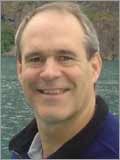
Steve Richardson
Spotlight: Blog post
Steve Richardson: I came with George Heidorn and Karen Jensen from IBM in 1991. We were the first three researchers hired (George and Karen retired from Microsoft a few years ago). We started on June 10, and Rick was hired in September. We had a chance to meet with him as he was being considered by Nathan for the position of director, and, of course, we were all impressed with him and his credentials.
The story of our coming to Microsoft Research stemmed from our desire to continue our natural-language-processing research in a conducive and supportive environment—and Microsoft Research has certainly been that over the last 15 years!
We started in Building 4, originally part of Nathan Myhrvold’s ATBD (Advanced Technology and Business Development) group. Even though we were hired with “senior researcher” titles, Microsoft Research didn’t exist until that fall.
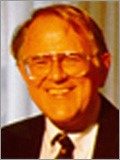
Gordon Bell
Gordon Bell: I didn’t join Microsoft Research until August 1995. But here’s the chronology of my relationship with Microsoft and the founding of Microsoft Research:
- April 18-19, 1991: I hosted a technical seminar in Geneva on Future Computing Environments that Nathan spoke at.
- June 10-11, 1991: Started consulting with Nathan about establishing Microsoft Research. In my notebook of that time, I had rankings and listing of possible heads. Rick [Rashid] was at the top.
- Summer 1991: Recruiting Rick. Nathan and I visited Rick in Pittsburgh and several folks at Bell Labs.

Rick Rashid
Rick Rashid: I was downstairs having dinner in my home in Pittsburgh, and I got this call from Gordon Bell. I’d known Gordon for a really long time—obviously, he’s well-known within the research community—but I’d also known him through some of the work that I’d done with him at Digital and other companies.
He had this proposition for me. He said that Microsoft was trying to start this research lab and that they were interested in finding someone who would be the director for the lab and that he felt that I was going to be a really great candidate.
Basically, what he was trying to do is set me up to be receptive to meeting with him and Nathan Myhrvold. They wanted to come out to see me in Pittsburgh.
My initial reaction to that was it was kind of a joke. It didn’t seem very likely that a relatively small company like Microsoft was really interested in doing an actual research lab, but because I knew Gordon quite well and I had a great deal of respect for him, I said, “Sure, you guys can come and visit me, and I will talk to you.”
Gordon and Nathan came a week or two later, and we had a chat about building a research lab and what that might actually mean.
Bell: Rick and his family visited Redmond and met Bill [Gates].
Rashid: I was still pretty unconvinced, but the upshot of that conversation [with Myhrvold and Bell] was that I would come out to Microsoft and actually talk with people. That led to my coming out and meeting with quite a few people over the course of a day, including Bill Gates, Jim Allchin, Paul Maritz. It was a good conversation with a number of key leaders at the time.
I had about an hour and a half with Bill, and it was quite an interesting conversation. I was very much expecting that Bill would not be interested in doing a research lab the way I thought it needed to be done, and I assumed pretty much for the whole day that while everyone might have halfway good intentions, no one really understood what they were talking about.
I was really surprised in my conversation with Bill that he seemed to resonate with everything that I was saying, and I came out of that meeting feeling that either 1) Bill was really good at figuring out what it was you wanted to hear and saying that, or 2) he actually believed it. I think, looking back, he actually believed it, but at the time, I wasn’t completely sure.
Bell: Rick declined the offer.
Rashid: It was a good day, and at the end of the day, I told Nathan, no, I really wasn’t interested. I went back to Pittsburgh, and I don’t even remember how many more times Nathan called me, but the joke I heard afterward was that, inside Microsoft, he would refer to me as Dr. No, because I kept telling him no.
Bell: On Aug. 13, 1991, I wrote Rick a three-page letter with the first sentence: “I’m writing to plead with you and your family to consider the opportunity to head the Microsoft Research laboratory for three reasons: your career, contributions to computing, and financial.”
Rashid: It was an interesting time for me, because at the same time Microsoft was trying to recruit me to be director of this new research lab, [Carnegie Mellon University] was trying to get me to be dean of its new school of computer science. It got me to thinking about what it was I really wanted to do, and that led to lots of conversations with my family and more and more conversations with Nathan.
I had a good meeting with George Heidorn and Karen Jensen, and finally, I decided that I would make a decision on Aug. 31. I did. I met with the university president and told him, no, I wasn’t going to become the dean of the school of computer science. I told Nathan, yes, I was going to come to Microsoft and start the research lab.
Pretty much the first person I called after that was Dan Ling. Dan had been my closest friend at Stanford. We’d done a huge number of things together. He was the person who actually got me into computer science in the first place, got me to take a course at Stanford. He’d had a very good career at IBM, had demonstrated that he was very good at managing research and running research activities, and so he was the first person on my list to call. He told me no, too—very similar to my reaction. I don’t think he was sure that this was really going to happen. It took me about six months to convince him.
For the first month and a half or so, I was basically running things out of my office in Pittsburgh, trying to recruit, and then finally was able to move here at the end of October and really get things going.
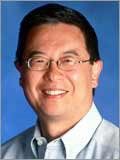
Dan Ling
Dan Ling: I was working at IBM Research in New York. I had been there for over 12 years, and it was a place that I really enjoyed. I had great colleagues, and it was a good research environment. I was quite happy there.
Rick was somebody I had known since we were freshmen at Stanford, so I’ve known Rick for 35 years now—an amazing amount of time. We were really good friends in college. There was a group of us who cooked dinner together every night for several years that included Rick. I got to know him very, very well.
When he moved to Microsoft in 1991, he called me and said, “We’re starting a lab at Microsoft, a research lab, and it’s going to be very exciting.”
I said, “That sounds very nice, but I’m quite happy at IBM.”
But Rick kept calling me. Every month, he would give me another call and say, “Lots of exciting things going on: new lab, new everything.” Finally, he said: “Well, why don’t you just come and visit? We’ll get together, and that will be fun, and then we can stop by Microsoft and have a look.” And I said, “Oh, OK, let’s do that.”
I came to the lab in February of 1992 and had a series of meetings, and I was just taken aback at how impressed I was with Microsoft, how much enthusiasm I found in the air, how much energy there was. The conversations I had with people were really stimulating, with Nathan Myhrvold, for example. There was a sense of possibility and a sense of wanting to do a whole new set of things and a sense of the company wanting to get into lots of new areas—just an incredible sense of excitement.
The conversations I had while I was here were broader in scope and more aggressively forward-looking to the potential of the microprocessor, the potential of computing to serve new human needs, the potential of networking to transform things, the potential of new devices to change people’s lives. Even though I didn’t want to move, I found myself thinking, “Gosh, this seems like such a wonderful opportunity that it would be foolish to pass it up.”
I decided to come very quickly. I found myself coming here in March of 1992. The lab was still tiny. There were only maybe half a dozen other people here. Karen Jensen and George Heidorn, who had started the natural-language effort here, also from IBM, and just a couple of other individuals involved in the project.
We were at the time a part of a larger group that Nathan had called Advanced Technology and Business Development, which Craig Mundie [Microsoft’s current chief research and strategy officer] headed. He was hired by Nathan and headed a sister organization to Microsoft Research. Craig has known very much about research over the years. He was responsible for a number of early incubation projects, and a number of them worked very closely with researchers. That set the model for a lot of incubations within Microsoft and the participation of research in incubation projects.
That was the beginning. I certainly have found it to be every bit and more of what I had expected.
Richardson: I remember back as part of ATBD how we had a weekly status meeting with others in ATBD (Charles Simonyi and his group were in ATBD, as well), and Karen Hargrove would lead intense discussions on current happenings in the PC industry, especially around the Windows®Operating System/2 clash that was so hot at that time. It really consumed us, and it was responsible, in part, for our coming to Microsoft.
The Biggest Bet
Ling: It’s interesting to think back to those days, because the company was obviously much smaller. It’s important to note that Microsoft started a research lab even though it was a relatively small company that had just surpassed $1 billion in revenue in 1990, when Research was being planned. There are many companies at $1 billion in revenue today that don’t have a research group. It showed great foresight on the part of Bill Gates and Nathan Myhrvold to start a basic research lab in the belief that such an organization would help Microsoft over the long run and ensure both a core of technically strong people that they would have, as well as a set of new technologies that would be available to the company as it grew and tried new things and met new competition.
Ramping Up
Rashid: From the very beginning, the mission statement for the organization has been to, first and foremost, move forward the state of the art. That gets measured in publications and open interaction in the academic community, and that’s part of the values that we have internally and that we espouse externally. That’s been a very important part of what we do.
The second part is to talk about the way we can impact our product groups and the world with the technologies we create. The second part of the mission statement is to take those technologies that make sense and move them into products and into the world as quickly as we can.
We’ve always been an open environment, we’ve always been highly collaborative, always valued interactions with universities. That allowed us to create a research lab that is unique. People may look to us now as a model for doing research, but when we went down this path, the approach we were taking was a little different from what people had done before.
Ling: Initially, we had a set of grand goals, but then also a set of very modest goals. The grand goals were that we knew we wanted to start a brand new research lab, which is something that doesn’t happen very often, and the first research lab associated with a software company. And we wanted to build it into a premier research organization that was comparable in quality to any other of the research labs out there.
We set ourselves the task of hiring outstanding people to join the lab, to establish our credibility. Initially, that was very difficult, because nobody thought of Microsoft as a research organization. We had no history of doing research; we were a relatively small company at the time. We were viewed as those people who make a little bit of PC software; that was about it.
That was clearly one of the important things to do, to create a good research atmosphere and to find great people to help staff the lab. A lot of people wouldn’t even consider coming to Microsoft to do research. A lot of young people were very skeptical. A lot of senior people were also very skeptical. It was really hard to attract people.
II. People in Place
Building a Core
Rashid: At the beginning, the fact that we were able to attract some extremely talented but also very energetic, very entrepreneurial people, was really what got the lab moving in the right direction. Being able to bring in people like Dan Ling, David Heckerman, and Eric Horvitz, the natural-language team of Karen Jensen, George Heidorn, and Steve Richardson, very talented people in the programming-language domain such as Daniel Weise—that set a tone that this was a real research lab. We had incredible people who were very excited about what they were doing, and they were very focused on really making a difference.
Richardson: Karen Jensen was the manager of the Natural Language Processing [NLP] group—and the primary linguist and “computational grammar writer”—from the time we came until she retired, and George Heidorn was the main brain behind all of our technical work. I was privileged to work with them, adding contributions to the basic system, dictionaries, MindNet, and, later, machine translation.
In our own NLP group, Bill Dolan and Lucy Vanderwende were hired in the first year we were here. Arul Menezes was already in ATBD, too, but finally “saw the light” and joined NLP in 1999, I think. They’ve all been major contributors to the progress of NLP over the years—and good friends besides. Our group has always been tight knit—with George and Karen leading the way for many years—and that tradition of close collaboration and friendship continues.
Another person who deserves mention and who joined in the first year was Joseph Pentheroudakis, who was our primary lexicographer and morphologist (if such a term exists) until just a couple of years ago, when he left Microsoft to pursue his (very good) artwork. Karen, George, Bill, Lucy, Joseph, and I formed the core team initially.
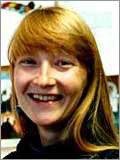
Lucy Vanderwende
Lucy Vanderwende: I got involved with the lab through Karen Jensen and George Heidorn, with whom I had worked at IBM. In the year that I went to Singapore as a visiting researcher, they moved from IBM Research to join the new Research division at Microsoft. When Karen got here, she was so excited she wrote to me telling me of this fabulous environment for doing research and asking me to consider applying. I had an offer to stay in Singapore for another three years, but I was also really intrigued with what Karen was telling me about. She said it was better than grad school and exhilarating in the breadth of the research areas.
In Singapore, at the Institute of Systems Science, I really enjoyed learning about other branches of computer science, such as speech recognition, databases, and virtual reality. That aspect of Microsoft Research really attracted me, as well.
Ling: One of the people we wanted to hire was Jim Kajiya, in the area of computer graphics. I had known Jim for quite a number of years, because he had done a bunch of consulting work at IBM and I had visited him at Caltech. He was very well-known in the field.
One thing we did was to have Jim spend an entire week with us to get a good feeling of the place and what we were doing. But we ran into this embarrassing situation: We didn’t have enough people to fill out a schedule for a whole week, so we had to scramble to figure out a variety of things for him to do and people to meet. But we were successful: At the end of that, he agreed to join us. He was one of the early distinguished researchers who joined the group.
New Blood
Vanderwende: Another noteworthy event in the early days was the collective interview of David Heckerman, Eric Horvitz, and Jack Breese. It was a lot of fun, but, of course, scarcely an interview!
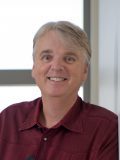
David Heckerman
David Heckerman: In 1992, I had just finished my M.D./Ph.D. and was starting off on my dream job—a professor of computer science specializing in bioinformatics. Two weeks into my career, Nathan Myhrvold, an old high-school buddy, asked me to meet with him—to reminisce, I thought.
To my surprise, he told me about a new research organization within Microsoft that he was forming and tried to convince me to come to Microsoft to apply some artificial-intelligence techniques that I had developed in my Ph.D. work. I told him “no way” but suggested he consider purchasing one of the companies I had formed with Eric Horvitz and Jack Breese that had commercialized my Ph.D. work.
Nathan cleverly brought all three of us to Redmond under the guise of considering our company for purchase. Our interviews with the few people who had already joined Microsoft Research impressed us so much that all three of us decided to join the organization.
Richardson: I remember well the intense series of interviews we all had with David Heckerman, Jack Breese, and Eric Horvitz, who came to us from Knowledge Industries with Bayesian networks in their back pockets. They have certainly lived up to the high expectations that we all had of them.
Ling: Once you have a few people, it gets much easier to attract others. Some of the early people who came were the ones who started our machine-learning efforts: Jack Breese, Eric Horvitz, and David Heckerman. They were fairly young researchers, so they didn’t have a huge reputation already established, but they were viewed as extremely talented, relatively new researchers.
That also meant that we got in very early on a whole new approach to machine learning that was built around statistics and probability and quantitative methods, and able also to deal explicitly with uncertainty. That whole Bayesian approach to machine learning has been a very key technology that we built over the years.
Recipe for Success
Ling: I felt that, in addition to researchers, we also needed to have other professional staff to build software prototypes that would make it much easier for product groups to accept the technology. We ought to have software-development engineers as part of the core research team in order to work side-by-side with the researchers to engineer high-quality prototypes and do research experiments and work with the researchers to create technologies that would be real enough that you could bring them to a product group and say, “Take a look at this, and see what you think of it.” That has been a valuable part of Microsoft Research that we have had pretty much since the beginning.
Another critical decision was to make sure that Microsoft Research was on campus together with everybody else at Microsoft, not located in some distant, secluded place. Many other research groups actually were designed that way, to be removed from the other development groups. I think it was very important that Microsoft Research was in the middle of campus. This allowed the researchers to spend a lot of time with various product groups, work with them, and get to know them on a personal level, then build the kind of relationship required to do successful technology transfers.
Rashid: Very early on, there were some really strong interactions with the product organizations, both around helping to bring MS-DOS® 6 and Windows 95 and Windows NT® to market by developing technologies that were important to those releases, but also by helping to create parts of the company. The fact that early on we took some of the work we were doing in streaming media and interactive TV and then that really spun out into the product group, became the Digital Media Division—that set a tone for our impact on the company.
III. Critical Mass
Freewheelin’
Richardson: The climate at Microsoft was a refreshing, fast-moving change.
Vanderwende: When I joined Microsoft Research, we were in Building 20, a small building that, remarkably, still exists. We watched in amazement as the pit for buildings 16, 17, and 18 was dug. The research groups that were then forming, Intentional Programming, Operating Systems, Natural Language Processing, Graphics—all were in close proximity, so if there were any visiting researchers, we all listened to their presentations. It was a pleasure to learn more about these other areas.
Heckerman: There were only 20 of us back in 1992. I remember a lot of empty offices, easy access to everyone within Microsoft Research, and a short walk to any product group on campus.
Ling: The research group always had a flexible and lightweight management structure, which was even more lightweight when we were a much smaller organization but continues to this day. There were a variety of different kinds of collaborations, and there was also a lot of camaraderie between the different individuals in the research group. We were a very close-knit organization. We had a good time as a group together.
Vanderwende: We had a few all-Microsoft Research parties that were, naturally, very small. I believe Karen Jensen and George Heidorn hosted the karaoke party at the PRO Club. Several of us now cringe to remember that we sang I Heard It Through the Grapevine, and George Heidorn and Steve Richardson gave a funny rendition of Don’t Worry, Be Happy.
Ling: When I came to Microsoft, I thought, “Microsoft is very casual, and everybody is very young, but it can’t be that different from IBM Research.” I remember going to an early meeting with a bunch of people from one of the product groups, and I think I was the only person at the meeting who wore shoes. I thought, “We’ve taken casualness one step further.” At IBM, we always did wear shoes.
‘The Place to Be’
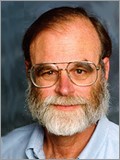
Jim Gray
Jim Gray: I joined Microsoft Research in 1995. Microsoft was a software company, the software company. They were revolutionizing ease of use, scale out, and … it was the place to be. It was great and still is—no B.S., just great people and clear focus on doing great work. It has gotten larger, and that has its problems, but also its advantages. There’s more diversity now.
Heckerman: There was great excitement that we were at the best software company in the world and could do just about anything we set our mind to. That excitement has not changed.
The Right Stuff
Ling: We would pick large areas that we would invest in, and we would try to find really outstanding people, and sometimes we would get into areas that we had not even expected to get into because we found somebody outstanding. Once we hired those people, we gave them a lot of freedom to determine what kind of a research direction to take, based upon conversations with management and other researchers, as well as with people in the product groups, to understand the company better, the challenges that the company faced, the product directions.
So, as part of that philosophy, we got into some areas pretty early on even though we had no idea that they would later become important to Microsoft. One area we got into was machine learning. It was pretty clear that kind of technology would be important to Microsoft, but at the time, 1995 or so, we also got into computer vision, the idea of computers being able to see and understand what they saw through a camera.
Heckerman: Microsoft Research made a big bet on machine learning. This has played out well with our advanced search and advertising capabilities, spam filters, data-mining tools, and, now, our advanced tools for bioinformatics.
Rashid: In 1996, when Microsoft Research had roughly 20 percent of all the papers at SIGGRAPH, that was a statement to the academic community that this was not just a real research organization, but also that we were becoming a powerhouse in the academic field, that we were publishing at a level in a number of areas that people had never seen before from an industrial organization, or even from other universities.
That was something that certainly made me feel—and I know made Nathan Myhrvold, whom I was working for at the time, feel—that we had come of age. At that point, the organization had about a hundred people. We were clearly having a dramatic impact in a number of different fields.
I can remember going into Nathan’s office not long after getting the news that we had done that well in SIGGRAPH publications. It was funny; he and I must have been thinking the same thing, because we just sort of looked at each other, and we both started laughing. Nathan has an infectious laugh anyway, and I tend to be that type of a personality, as well, and we just started talking about how we felt that what we had started five years before had actually worked. There was this feeling that, OK, we really did it, we really did build a world-class research lab, and now, we have the evidence to show. That certainly made both of us feel pretty good about where we were.
It was also right about that time that we started having serious conversations about starting research labs outside the United States. Nathan had always talked about that from the very beginning of the lab. In fact, it was in a memo that he wrote to the board to get approval for creating a research lab. He had always talked about being able to do research outside the United States, but I was always very resistant in the early days, because I felt that we really needed to get one lab working first before thinking about doing two or three.
Once we reached that milestone, I think the feeling was, OK, this was working. There were significant talent pools in other parts of the world that we needed to start thinking about tapping into. It was later that year that we started having conversations with Roger Needham, and the following year, we got the Cambridge lab started. The year after that, we started moving into China and other places.
IV. Reap and Sow
Acute Vision
Ling: There was a lot of exciting work going on in computer vision and some extraordinary researchers who joined us in that area. Two, for example, are P. Anandan and Harry Shum, both computer-vision people. And then, of course, Rick Szeliski—they all joined pretty early on. When we started that research group, we were not sure how it would affect Microsoft, especially given the emphasis at the time on Office products and Windows.
But today, with digital medial, digital video, things like Virtual Earth™, suddenly it’s quite clear how computer vision is able to impact the kinds of products that Microsoft can deliver, whether it’s in videoconferencing technology or ways of improving, organizing, and manipulating images or video, or manipulating the images on Virtual Earth. Clearly it has had a tremendous impact.
Transferring Technology
Richardson: Nathan and Rick were always very supportive of our natural-language-processing work, and I must say that has been constant for the last 15 years. Rick has always been close to our group. And the support continued when Dan was hired—we shared a common past with him, too, with all of us (Dan, George, Karen, and me) having worked at IBM Research before coming to Microsoft.
Vanderwende: When the Natural Language Processing group first began, we were very focused on creating the best natural-language-analysis program that would be the backbone of all text-processing applications. The first application was, at the time, naturally, a grammar checker, which we provided in four languages finally. The grand idea was to create all text in Word, so that by storing the sentence analysis created as a byproduct of the grammar checker, subsequent applications could access that analysis for other purposes, for example, high-precision text retrieval or information extraction.
In the end, we couldn’t make the grand idea happen. The storage of Word documents was already so complex and subject to change across the different versions of Word that adding sentence analysis to the pot simply didn’t work. It was a cool idea, but, in the end, not practical.
Richardson: I don’t think I’d do anything differently. We started developing natural-language parsers from the moment we came here, and we’re still using them in all kinds of scenarios.
The grammar checker was the first “big bet” for tech transfer from our group and was a real success, being shipped in Word 97 and then again in Word 2000 and Office XP. For the first version, we worked really closely with our development counterparts in the Natural Language Group.
MindNet was another “big bet” we made early on, which formed the basis for our contributions to more accurate natural-language searching in the Encarta 98® product and has been used in a lot of our follow-on work in machine translation—along with the natural-language parsers. Machine translation is now undergoing a successful incubation and having wide-reaching impact on Microsoft’s localization efforts—and, I hope, on all of Microsoft’s global businesses in the future.
Gray: The bet on decision theory paid off, the bet on language—spelling, grammar, translation—paid off, programming tools helped the security push … it is a long list.
Engineering Impact
Ling: Another good example is work that started at the very, very beginning of Microsoft Research, work that was already under way when I first came for my interview: thinking about tools to help Microsoft programmers write better software. It was something that became BBT [Basic Block Tools], which had a tremendous amount of usage within Microsoft, but, more than that, grew into a large program of development of a variety of different kinds of tools that helped Microsoft programmers find bugs in software, write better code, think about language extensions. Today, we’re thinking about how to deal with concurrency and programming for multiple processors, improving the way we do testing, and so on.
All of those projects have had both a tremendous impact, not only on how Microsoft engineering works and how our engineering processes work, but also on how the whole external research community thinks about the use of formal methods and other such techniques in software development. It has had tremendous impact, not only internally on the company, but also on the whole research direction of the field, which was pretty exciting.
V. Pushing the Envelope
BillG Meetings
Heckerman: It’s been fun meeting with Bill from time to time. Like everyone, I wish he had more time.
Vanderwende: I wonder if all funny remembrances center around BillG meetings. It could be because any meeting with BillG is memorable.
In our case, Bill Dolan and I were going to give our first presentation of MindNet to BillG; it was probably in 1993. Nathan was giving the first part of the presentation, in PowerPoint® using a digital projector, and he spent most of his time highlighting all of the then-current devices that would become obsolete in the near future. Bill Dolan and I started sinking in our chairs at the mention of the overhead projector, which, Nathan explained, would go the way of the dinosaur.
When we got up, we had to ask everyone in the room to turn their chairs around, because we were using an overhead projector on the other side of the room. And not only that, but we hadn’t yet figured out PowerPoint, so we showed screenshots and handwritten slides on transparencies and had to huddle around a very slow laptop so we could explore MindNet in more detail. I assure you that we figured out PowerPoint very quickly after that!
Taking Risks
Ling: Clearly, over the course of 15 years, not all projects are successful. If all projects were successful, then we’re obviously not taking enough risks, because in many ways, the definition of research is the taking of some risk, which means that some projects won’t be successful.
We’ve tried to encourage people to take some risks. Projects may succeed, they may fail, but if they fail, rather than focusing on the failure, what we often try to do is take the ideas and say: “All right, this effort didn’t have the kind of impact we thought we would have, but what if we change the assumptions, change direction? Let’s see if a different set of ideas in a related way can have an impact.” That’s often been successful, to take a project that product groups may not have been that interested in but then goes on to have much larger impact in different ways.
A good example of that is when we started a project to look at distributed file systems. It was an interesting project that had some interesting technical insights, but the product groups weren’t that interested at the time in having a distributed file system of this kind. But it did get us thinking a lot more about storage and how storage should be managed, and that has resulted in a lot of new work that has had a lot more impact on Microsoft, in, for example, how Hotmail® is dealing with its storage structures, and with other groups around the company as they plan their storage systems. It got us thinking about storage, and thinking more about storage led to a whole new set of activities.
Adjust and Execute
Ling: We have groups, and the groups have names, but the names are deliberately somewhat vague in many cases. And the directors and the research-area managers, they’re not the research-area manager of X or the director of Y. We’ve done that to allow us to reshuffle groups of people and create new groups or new topics of research that might become important over time and to allow us to shuffle groups together so that, over time, a single research-area manager may have a different collection of groups to meet certain kinds of needs.
In recent years, as search has gotten more important, as advertising has gotten more important, as Web services have gotten more important, security got more important, we wanted to make sure that we responded to those needs, so we would increase our research activity in those areas. In some cases, we hired new people, and in other cases, we took existing people and reconfigured the group a little bit to focus on some of these new areas.
Some of the really exciting work in cybersecurity, for example, is being done by Yi-Min Wang, who had been doing work on home-computing scenarios, but he got interested in this new project, we clustered some other people around him to carry this out, and it’s been an incredibly successful, very innovative approach to looking at security issues on the Internet. As advertising and auctions have gotten more important, we were able to reconfigure some of our machine-learning people, as well as some of our theory people, to focus on those activities.
As new topics have come up, we’ve been able to mix and match them to address a whole new important area for the company.
VI. Assessing Success
Listen and Learn
Gray: I have learned a lot. See my papers.
Vanderwende: I visited Microsoft Research India last December, and the mood there is reminiscent of the early days of Microsoft Research: Everyone gathered for the talks, regardless of discipline. Now, because the areas that Microsoft Research Redmond covers are so vast and the visitors so numerous, it is impossible to keep up with the lectures, and so it’s harder to discover those overlaps between the disciplines and to meet people to notice similarities in the problem space.
Microsoft Research is so large now that people joining probably don’t have an expectation that they could get to know all of the areas that research covers, but for the few of us who have been here a long time, that is something I miss, though, of course, Dan and Rick still have that oversight.
Ling: I have been extremely lucky and privileged to have been part of the birth and growth of this organization. This is just something that doesn’t happen very often. It’s just an opportunity that only a very few people ever get a chance to do, and so I realize how lucky I am to have been part of this.
It’s also been a tremendous learning experience for me. I had managed a group of people at IBM, but it was a much smaller group of people with a much narrower scope. I’ve learned a lot about managing people, the importance of the people issues in any organization, in attracting the right people, retaining the right people, creating an environment where they do their best work, making sure people have the right amount of freedom to do things and yet have some direction, and how to do this within a company that is changing quite rapidly and with technology that is changing quite rapidly. That’s been a tremendous growth experience for me.
I’ve also been very lucky to have had a wonderful set of colleagues to both help me run the lab and teach me things and provide their insights and their experiences to help us figure out what the right things to do are. It’s been a transformative experience.
Heckerman: There are a lot of smart people in the world, many at Microsoft, and they are all worth listening to.
Taking Stock
Ling: There are a bunch of things that we look at to measure our success. We certainly look at the people we have, the quality of the people we have. Are people choosing to join us? That means our ability to recruit outstanding people, as well as keeping the people who we think are outstanding researchers. That’s one set of criteria.
Another is our role within the company: Are we valued as a partner among the product groups? Are we successful at transferring technology? Are we a central part of technical decision-making and the technical activities within the company? Are we contributing to the company? There is a whole set of issues around how we are doing as far as impacting Microsoft and its customers.
A third would look at our impact on the external research community: How are we viewed by our peers elsewhere in academia or industry? How well are we doing at conferences? Are our researchers being recognized by their peers? Is our work influencing the general research direction of the larger world?
On all of those three sets of metrics, we have to judge how well we’re doing. I think we’re doing very well. I think that we are a very important part of the company and many of its new initiatives, such as a lot of the Live services. I think we’re a key participant in many of those efforts, whether it be search or advertising or Virtual Earth or helping control spam or security issues.
I also think that, in the larger research community, our work is very well regarded, if you look at the top conferences, the top journals, recognition of our researchers; if you look at the research directions that the community at large is taking in a variety of areas, whether it’s the growth of image-based rendering, or the growth of the Bayesian approach to machine learning, or the growth of the use of practical application of formal methods to program verification or partial program verification. We’ve had a significant part in a lot of those larger trends. I think we’re very well viewed in the communities at large, as well.
A Proud Legacy
Rashid: The thing I’m personally the most proud of is creating an atmosphere that researchers can work well in. The most important role I’ve been able to play is to set direction in terms of what it means to be doing basic research and how that fits within a company like Microsoft, and also to establish a set of values. What is it that this organization values?
Richardson: My experience over the last 15 years at Microsoft Research has been the most rewarding of my professional life. It has fulfilled the lifelong dream I’ve had of doing research in natural-language processing and, specifically, in machine translation, which I started working on 30 years ago as an undergrad. Today, I am the manager of the machine-translation project in Microsoft Research, with the potential to have an impact on the quality and effectiveness of communication between businesses and people worldwide. What more can I say?
Heckerman: I’m so grateful to be part of an organization that has welcomed my exploration of so many areas, from pushing the state of the art in machine learning, to data mining, to spam filtering, to vaccine design. I suppose I’m most proud of my recent work, helping in the design of a vaccine for AIDS. It’s a terrible disease that has killed more than 25 million people, and it’s very gratifying to be working to stop it.
Vanderwende: The joy of working for Microsoft Research is to be part of the shift in NLP, to see natural-language processing not simply as another application of machine learning, but to put first and foremost why Microsoft Research should include NLP in its research directions. Our goal is to provide true natural-language understanding, not just in one domain or for one application, but to provide a method for understanding all language (and languages) in a way that reflects human intuitions and judgments.
We all make mistakes, but the mistakes a person makes are, usually, understandable at some level, while the mistakes a computer makes are usually just dumb. If, when the computer misinterprets a text, people think the mistakes are understandable, and not just dumb, then NLP has the potential to allow users to build a trust in computer text processing that is currently lacking.
What new applications that trust might enable is for others to imagine. Building the tools for computer understanding is still a full-time job.
Gray: The part of my Microsoft Research career that I’m most proud of are the people I mentored.
Rashid: When I was elected to the National Academy of Engineering back in 2003, the citation for my election recognized not only my research work in operating systems, but also innovation in industrial research. That was as much a statement about how I created the research group, in the form that it wound up taking, as anything else.
Ling: In the end, I’m most proud of the people who are here, because I think it’s the people who are responsible for the success of the lab. If we have a great set of people, my assumption is that we’ll do well today and we’ll do well tomorrow, because they’ll bring in other great people. I’m incredibly proud of the simply outstanding caliber of researchers that we’ve been able to attract to Microsoft Research.





